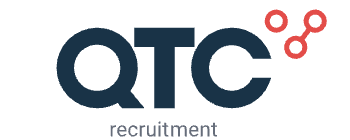Geschreven door manon - 5 Minuten leestijd
Ways to support employee growth and professional development

Employee retention is one of the biggest threats to businesses throughout the country. The tide has shifted in recent years, and the employees now have more power than ever in their relationships with employers. In fact, 65 percent of workers believe they can leverage this control to their advantage through salary and benefit negotiations.
One way for businesses to keep employees satisfied and committed is through employee growth and professional development initiatives. Udemy found that 42 percent of employees said that learning and development were the most important benefits when deciding where to work.
By taking a proactive approach to your employee growth and professional development strategies, you can mitigate employee turnover and drive more productivity. Here are six ways to support employee growth and professional development in the workplace.
Also published on Glassdoor.com
Want to stay informed about current Life Science and recruitment news on a regular base? Then register here for free.
1. Give Recognition and Rewards
If you want to support employee growth and professional development, you must first keep them happy and motivated. That starts by creating a company culture that rewards and recognizes exceptional work. Giving recognition and rewards to your employees can motivate them, and it encourages loyalty - which are driving forces behind employee growth. When workers feel valued and their efforts recognized, performance levels increase. A study from Alight Solutions found that employees who felt their rewards were met are seven times more likely to be engaged with their work. Recognition and rewards are excellent ways to incentivize your employees to grow with the organization. While monthly or annual awards are great, consider recognizing your employees spontaneously - as 47 percent of employees said they prefer unplanned rewards.2. Provide Feedback in Real-time, Not Just During Annual Reviews
According to a study from Wakefield Research, more than 90 percent of employees would prefer that their manager address learning opportunities and mistakes in real-time, not during an annual review only. Organizations that do not provide continuous feedback cannot expect employees to grow or develop in the areas within which they struggle. Knowing your weaknesses is an important step in personal and professional development. Organizations need to implement processes that help management organize and assess the strengths and weaknesses of their employees on an ongoing basis. These managers need to then communicate the results of those assessments throughout the year - either weekly, monthly or quarterly. This ongoing evaluation and communication process provides a feedback loop that helps employees understand the areas they need more training in, as well as developmental areas to improve employee aptitude and performance.3. Use a Learning Management System (LMS)
A learning management system (LMS) offers organizations a scalable solution to employee growth and professional development. As the name might suggest, learning management systems are applications that help businesses create, store, track, deliver and report educational resources, trainings and developmental programs. LMS software offers businesses an alternative solution to creating, managing and delivering training materials and courses manually. Rather than investing valuable time training new hires or working one-on-one on redundant training programs, businesses can utilize LMS software to move that training into an eLearning platform. Not only does LMS software streamline the employee training, but it allows the organization to deliver consistent material and uphold their quality assurance.4. Encourage Mentoring and Coaching
Another way for businesses to look internally to support employee growth and professional development is through mentoring and coaching programs. The modern workforce has changed, and employees no longer respond well to demands or orders. Rather, managers must learn to work in tandem with their employees, similar to a coach or mentor. Organizations can support the growth of their employees by creating a management culture that encourages communication and training. Managers shouldn't be afraid to ask employees if they need help, and they should relish in the opportunity to pass on skills or knowledge to their employees. Professional development and training typically fall on one's direct managers - so emphasizing a culture of coaching and mentoring is an excellent way to encourage employee growth.5. Identify and Develop Soft Skills
Soft skills refer to the personal traits and non-technical attributes that help you succeed in your career. These skills can include areas like time management, delegation, active listening, and communication, among others. Organizations that offer training and educational resources for soft-skill development can increase the productivity of their entire team - not just the employee. Surprisingly, soft-skill development is something that many of today's managers lack. Most organizations promote their best-performing employees to managerial positions, even if they lack proper management skills, training, or experience. In fact, a 2016 study from Grovo found that 87 percent of managers wish they had more training before being asked to lead. While productivity is important, organizations need to take a proactive approach to assess and develop soft skills for employees and managers.6. Implement Cross-Departmental Training Programs
Today's businesses are becoming less and less siloed. Whether you work as a production manager or the front-line sales representative, there is value in understanding how every unit operates. As such, organizations can support employee growth and professional development by implementing cross-departmental training programs. Moreover, breaking these departmental barriers can improve communication from one unit to the next - thus, increasing the efficiency of your entire organization. For instance, your customer service department might notice a common theme in consumer complaints about a product. If there is a communication gap between them and the production team, that deficiency or issue might not be brought up as quickly as it should. Cross-departmental training programs can educate your employees about different areas of your business, while also providing a better communication channel between different sectors of your organization.7. Continue to Look for Developmental Opportunities
To mitigate employee turnover and decreased productivity, organizations must find creative ways to engage workers and increase their loyalty. Employee growth initiatives and skill-development programs are two long-term strategies that provide the foundation for improved employee experiences. If businesses want to invest in anything in 2019 and beyond, it should be their most valuable resource - their employees. Do you find difficulties retaining or developing your Life Science professionals? This might cause low staffing within the organisation. We are specialised in finding the best suited professional for your organisation according to your needs and requirements. Why don’t you check out this page and see how we can help you. Lees meer actueel nieuws.Also published on Glassdoor.com
Want to stay informed about current Life Science and recruitment news on a regular base? Then register here for free.
